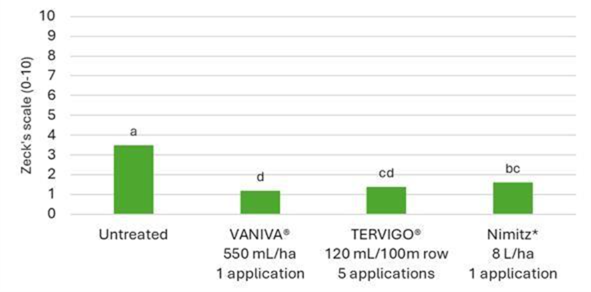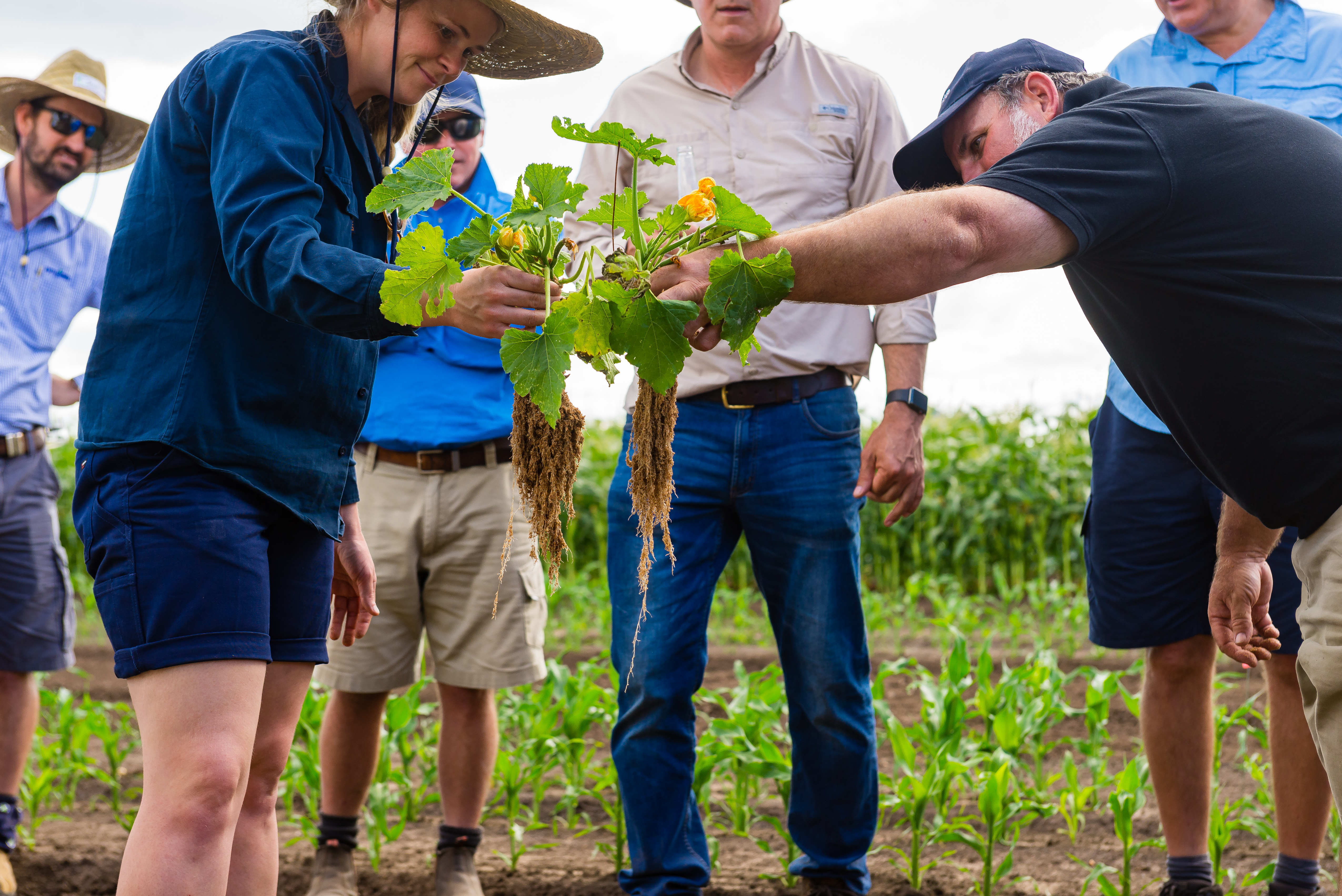Vaniva powered by Tymirium technology is the latest cutting-edge nematicide from Syngenta, protecting cucurbit and fruiting vegetable crops in open field and protected cropping, from root-knot nematodes.
Developed as an easy-to-use solution with exceptional potency against root-knot nematodes, Vaniva has a low impact on soil health and the environment, and an excellent worker safety profile.
Only one application of Vaniva is required to soil via the trickle/drip irrigation system at planting to protect developing roots. With a low application rate of 550ml/ha, Vaniva provides long lasting activity around the root zone so plants can establish a strong vigorous root system.
Using Vaniva ensures the plant is protected against early infestations of root-knot nematodes to promote the greatest yield potential of the crop.
In Australia, Vaniva has demonstrated exceptional control against root-knot nematodes.
In a trial at Meadowvale in Queensland in 2019, Vaniva was applied immediately after transplanting rockmelons (cv. Jamaica) and compared with five applications of Tervigo (applied at transplanting then at fortnightly intervals), and a single application of Nimitz (applied seven days prior to transplanting).
The trial was in a commercial field with a previous history of nematodes and remnants of the previous strawberry crop (note Vaniva is not registered for use in strawberries) which had been sprayed out but not cultivated.
A DNA-based test confirmed nematodes were present in the soil at damaging levels.
With root infection deemed commercially damaging in the untreated samples, Vaniva significantly reduced the incidence of root galling compared to the untreated (Figure 1).
All nematicide treatments effectively reduced root-knot nematode to low commercially damage levels (Zeck’s rating <2).
Nematodes often remain undetected.
Plants rarely die from nematode infestation; however galls produced by root-knot nematodes interfere with proper root function, limiting the plants’ ability to access water and nutrients.

Nematode infestation can occur within days of transplanting, so it is essential to protect new plants soon after planting.
If nematode infestation has occurred, plants can show symptoms later in the growing season such as water stressed, stunted and/or yellowing plants, reduced crop load, and smaller fruit.
By then, it is too late to save the crop from nematode damage.
Root-knot nematode damage to root systems can also increase the severity of diseases like Fusarium and Phytophthora, which becomes more apparent during periods of water stress.
Vaniva nematicide enables more vigorous root development, enhancing symbioses between the soil and plant roots, for healthier crops.
In comparison with most other nematode management options, Vaniva nematicide has been demonstrated in Australian trials to preserve diverse species of soil organisms, having limited effect on soil invertebrate populations or soil bacteria, helping maintain fungal diversity and mycorrhizal fungi agroecosystems.
Syngenta technical services lead, Dr Shaun Hood says our soil microbiome and biota study with AgPD and Metagen in Bundaberg last year was really exciting.
“We knew from our development trials how effective Vaniva is as a nematicide, but to have this evidence, that reflects a wealth of global data on soil health, which Vaniva has negligible impact on soil microorganisms was brilliant,” he says.
“In addition to an exceptional soil health profile, what sets Vaniva apart from every other nematicide is how easy it is to use.
“One simple application at transplanting protects the plants during that critical establishment phase and sets the crop up for the best possible yield.”
Vaniva is registered in fruiting vegetables and cucurbits (field and protected cropping) with a single use rate of 550 mL/ha.
This is significantly less volume than every other available nematicide, again making farm operations easier.
To achieve optimal results, plants should be sown/transplanted within 12cm of the drip/trickle irrigation to ensure Vaniva distributes directly around the root system.
Like all crop protection products, knowing the paddock history and monitoring is key to ensuring you’re using the right product at the right time.
Protected cropping growers will also be able to use Vaniva which Syngenta southern horticulture manager Nick Hall feels will be a huge win.
“Everything is intensified in protected cropping and with short cropping cycles there is little time for corrections,” he says.
“Ensuring your soil is healthy, and using tools that support ongoing soil health, is critical.”
For more information on Vaniva nematicide, go to syngneta.com.au or speak with your local Syngenta representative.




